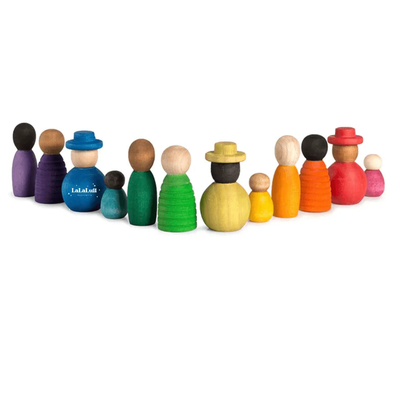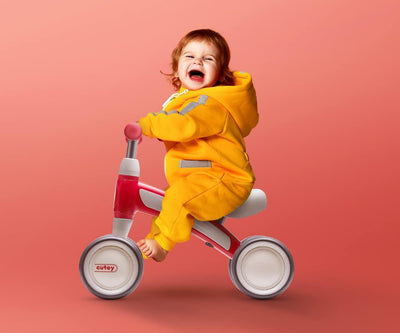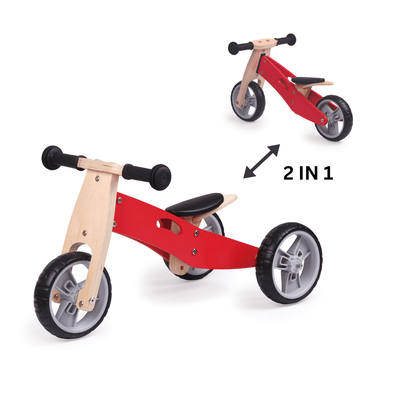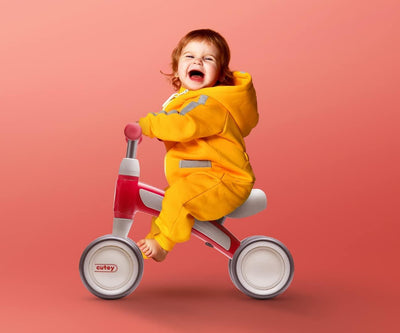Balance bikes are a fantastic way for children to learn how to ride, build confidence, and develop essential motor skills. However, as with any activity involving movement and speed, safety is paramount. Ensuring your child stays safe while enjoying their balance bike can prevent injuries and make the experience more enjoyable for everyone. Here are some essential safety tips for kids riding balance bikes.
1. Always Wear a Helmet
The most crucial safety measure is wearing a helmet. Helmets protect your child's head in case of falls or collisions.
- Choose the Right Helmet: Ensure the helmet fits properly and meets safety standards. It should sit level on your child’s head and not tilt forward or backward.
- Check the Fit: The helmet should be snug but comfortable. Adjust the straps so that they form a V-shape under your child’s ears and buckle securely under the chin.
2. Wear Appropriate Clothing
Dress your child in suitable clothing to protect their skin and improve visibility.
- Protective Gear: Consider additional protective gear such as knee and elbow pads, especially for beginners.
- Bright Colors: Choose bright or reflective clothing to make your child more visible to others, especially when riding near roads or in low-light conditions.
- Comfortable Shoes: Ensure your child wears closed-toe shoes with good grip. Avoid sandals or shoes with laces that could get caught in the bike.
3. Check the Bike Before Each Ride
Regularly inspect the balance bike to ensure it is in good working condition.
- Tires: Check the tires for proper inflation (for air-filled tires) and ensure there are no significant wear or damage.
- Brakes: If the bike has hand brakes, make sure they are functioning correctly.
- Loose Parts: Inspect the bike for any loose parts or bolts and tighten them as needed.
- Seat and Handlebars: Ensure the seat and handlebars are at the correct height and securely fastened.
4. Choose Safe Riding Areas
Select appropriate and safe locations for your child to ride their balance bike.
- Flat Surfaces: Start with flat, smooth surfaces such as driveways, sidewalks, or dedicated bike paths.
- Avoid Traffic: Keep your child away from busy roads and areas with heavy traffic.
- Supervise: Always supervise your child, especially in new or unfamiliar areas. Ensure they stay within a safe distance.
5. Teach Basic Riding Rules
Educate your child on basic riding rules and safety practices.
- Look Both Ways: Teach your child to look both ways before crossing streets or driveways.
- Ride on the Right: Encourage your child to ride on the right side of paths or sidewalks, just like cars on the road.
- Communicate: Teach your child to use simple signals or words to indicate stopping, turning, or slowing down.
6. Encourage Slow and Steady Learning
Allow your child to learn at their own pace and encourage gradual progress.
- Start Slow: Begin with short, slow rides to help your child get comfortable with balancing and steering.
- Gradual Progression: Gradually increase the difficulty by introducing gentle slopes or turns as your child gains confidence and skill.
- Positive Reinforcement: Offer plenty of encouragement and praise to boost your child’s confidence and make learning enjoyable.
7. Set a Good Example
Children often mimic the behavior of adults, so set a good example by following safety rules yourself.
- Wear a Helmet: If you ride a bike, always wear a helmet and follow safety practices.
- Obey Traffic Rules: Demonstrate proper behavior by obeying traffic rules and signals.
- Stay Alert: Show your child the importance of staying alert and aware of their surroundings while riding.
Conclusion
Safety is a top priority when it comes to children riding balance bikes. By following these safety tips, you can help ensure your child has a fun and safe experience while developing their riding skills. Remember, a well-protected and confident rider is a happy rider. Equip your child with the right gear, choose safe riding areas, and teach them the basics of bike safety to create positive and enjoyable riding experiences. Happy riding!











